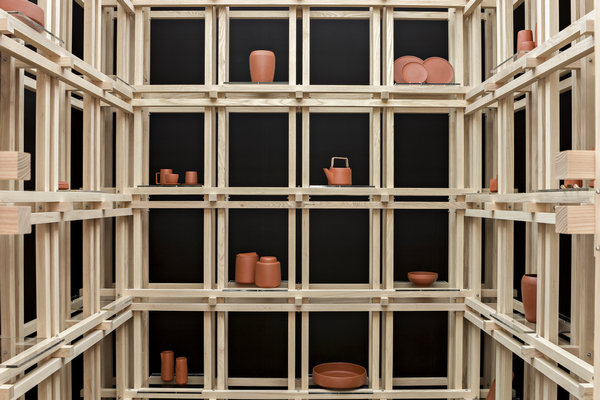 |
|
Christopher Jenner's designs, Yixing Ceramic Collection. [Photo provided to chinadaily.com.cn] |
Zisha
, or purple clay, is an important material with a long history in China. It has been widely applied in making teapots and pots since ancient times. Today, there are even electric zisha rice cookers.As most people have become accustomed to using traditional Chinese-style zisha wares, British designer Christopher Jenner is giving new looks to the material.
Born in South Africa and now based in London, Jenner is skillful at breathing new life into old things.
He was inspired by the simple beauty of zisha on a trip to Shanghai. He traveled six times to Yixing in East China's Jiangsu province- the most well-known home of traditional zisha products - to finish his designs, the Yixing Ceramic Collection.
Here are 10 questions and answers with Jenner, which will let you learn more about the designer and how he was inspired by Chinese culture.
Q: What made you want to be a designer? Or why did you choose to be a designer? Who influenced you most?
A: I was always very interested in making things and from an early age I had free reign of my dad's workshop and the amazing tools my grandfather collected. The reason I chose design was that it allowed me to play within a broader spectrum of disciplines; I never wanted to be placed in a box under a certain discipline. It is important for me to be able to express my creative personality in as many varied ways as possible.
From an influence perspective I would say I'm mostly influenced by cultures around the world and the manner in which they themselves express creativity through craft, design and art.
Q: How did you get to know Chinese ceramics and how did they inspire you to design new products?
A: I first discovered Yixing ceramics on a trip to Shanghai, where I was captivated by their simple material beauty. Yixing ceramics are very much part of the Chinese love affair with tea; they play a superbly functional part in this ritual. I wanted to capture this functional aspect and broaden its appeal to a larger global audience through the design of this home ware collection.
Yixing ceramics were first used in the Song Dynasty (960-1127). The minimal shapes of this dynasty were the starting point for the design of this collection.